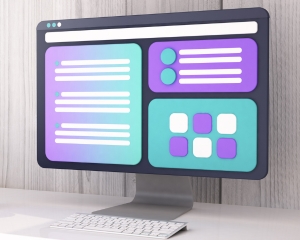The Importance of Design in E-learning
- Design: Beyond Aesthetics
- Adaptability and Accessibility
- Information Structure and Hierarchy
- Engagement and Interactivity
- Consistency and Coherence
- Future Tools for the E-learning Designer
E-learning design plays a crucial role.
The era of digital learning has revolutionized our traditional approach to education. In this transformation, the central role of design cannot be overlooked. Far beyond mere aesthetics, design structures, shapes, and enhances the learning experience.
So, how can the digital content designer leverage design to strengthen pedagogical effectiveness?
Design: Beyond Aesthetics
When people think of design, they often first picture aesthetics—colors, images, typography. But in online learning, design goes much deeper. It’s about optimizing both UX (User Experience) and UI (User Interface).
UX focuses on how learners navigate, feel, and interact with the content, while UI emphasizes the visual and aesthetic aspects. Tools like Adobe XD for interface design or Moodle for structuring the user experience are essential for any digital learning content designer aiming to create effective, engaging experiences.
Adaptability and Accessibility

In e-learning, content must be adaptable to different devices (computers, tablets, smartphones) and learning environments. Responsive design ensures a smooth experience regardless of screen size or platform.
Accessibility means making learning inclusive for everyone, including people with disabilities. This involves using readable fonts, proper color contrast, screen reader compatibility, subtitles for videos, and keyboard navigation.
A well-designed course considers both adaptability and accessibility to ensure that all learners can engage with the content effectively, anytime and anywhere.
Information Structure and Hierarchy
In the context of online learning, a clear and organized presentation of information is essential. A well-designed e-learning course guides the learner’s attention to key points and supports better information retention.
Tools like InDesign or Canva, for example, help visually structure content by using design elements—such as layout, spacing, color, and typography—to establish a clear hierarchy of information. This visual organization enables learners to quickly grasp what’s important and navigate the content more efficiently.
Engagement and Interactivity
Interactive design is at the heart of learner engagement. Interactive elements, such as simulations, videos, and quizzes, should be designed to stimulate engagement and participation. Platforms like Captivate or Elucidat offer designers the ability to easily integrate these elements into their courses.
Consistency and Coherence
Consistency is essential to reinforce the credibility and authority of an online course. Harmonious color palettes, consistent typography, and recurring visual elements are crucial for creating a familiar and reassuring atmosphere. Fortunately, tools like Adobe Color or Google Fonts are available to designers to ensure this coherence.
Les outils du futur pour le Concepteur E-learning 
Pour rester compétitif et innovant, il est crucial de suivre l’évolution technologique. Au fur et à mesure que la technologie avance, de nouveaux outils font leur apparition, apportant des fonctionnalités toujours plus innovantes. Parmi ces innovations, la réalité virtuelle, la réalité augmentée et les assistants vocaux se démarquent en ouvrant de nouvelles perspectives en matière de design pédagogique. Il est donc essentiel pour tout concepteur de supports digitalisés de rester à la pointe des tendances afin de proposer des expériences d’apprentissage toujours plus immersives et engageantes.
Conclusion
Design is inseparable from the quality of a Online Training. For any digital content designer, mastering design tools and techniques is more than a skill: it is a necessity to meet the current demands of digital learning.
1. Why is design crucial in e-learning training?
Design plays a fundamental role in the effectiveness of e-learning training. In fact, it’s not just about aesthetics, but also about structuring and organizing content to facilitate learning. A well-thought-out design improves the user experience (UX) by making navigation intuitive and highlighting key information. As a result, an attractive user interface (UI) captures learners’ attention, increasing their engagement and motivation.
2. What are the key elements to consider in the design of an e-learning module?
To design an effective e-learning module, it is essential to consider:
- Ergonomics: Ensure smooth and intuitive navigation for the user.
- Visual Consistency: Use harmonious color palettes, consistent typography, and recurring visual elements to create a familiar and reassuring atmosphere.
- Adaptability: Ensure that the content is accessible across different devices (computers, tablets, smartphones) through responsive design.
- Interactivity: Integrate interactive elements such as quizzes, simulations, or videos to stimulate learner engagement.
- Accessibility: Ensure that the content is accessible to all learners, including those with disabilities.
3. Quels outils peuvent aider à la conception de modules e-learning de qualité ?
Plusieurs outils sont disponibles pour assister les concepteurs dans la création de modules e-learning :
- Adobe XD : Pour le design d’interface utilisateur (UI) et la création de prototypes interactifs.
- Moodle : Une plateforme open source pour la gestion de l’apprentissage en ligne, permettant de structurer l’expérience utilisateur (UX).
- Bootstrap : Un framework facilitant la création de designs réactifs et adaptatifs pour différents appareils.
- Figma : Un outil de design collaboratif en ligne pour la création d’interfaces et de prototypes.
- Canva : Pour la création de visuels attrayants et la structuration de l’information de manière claire et organisée.



